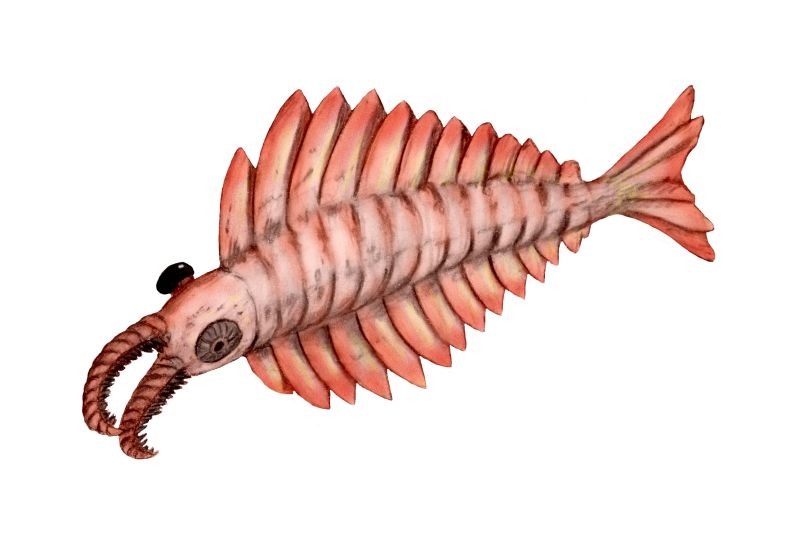Wednesday, October 27, 2010
October 27, 2010 : Anomalocaris (Extinct)
Anomalocaris
Anomalocaris ("abnormal shrimp") is an extinct genus of anomalocaridid, which are, in turn, thought to be closely related to the arthropods. The first fossils of Anomalocaris were discovered in the Ogygopsis Shale by Joseph Frederick Whiteaves, with more examples found by Charles Doolittle Walcott in the famed Burgess Shale. Originally several fossilized parts discovered separately (the mouth, feeding appendages and tail) were thought to be three separate creatures, a misapprehension corrected by Harry B. Whittington and Derek Briggs in a 1985 journal article.
Anomalocaris has been misidentified several times, in part due to its makeup of a mixture of mineralized and unmineralized body parts; the mouth and feeding appendage was considerably harder and more easily fossilized than the delicate body. Its name originates from a description of a detached 'arm', described by Joseph Frederick Whiteaves in 1892 as a separate crustacean-like creature due to its resemblance to the tail of a lobster or shrimp.
The first fossilized mouth was discovered by Charles Doolittle Walcott, who mistook it for a jellyfish and placed the genus Peytoia. Walcott also discovered a second feeding appendage but failed to realize the similarities to Whiteaves discovery and instead identified it as feeding appendage or tail of the extinct Sidneyia. The body was discovered separately and classified as a sponge in the genus Laggania; the mouth was found with the body, but was interpreted by its discoverer Simon Conway Morris as an unrelated Peytoia that had through happenstance settled and been preserved with Laggania. Later, while clearing what he thought was an unrelated specimen, Harry B. Whittington removed a layer of covering stone to discover the unequivocally connected arm thought to be a shrimp tail and mouth thought to be a jellyfish. Whittington linked the two species, but it took several more years for researchers to realize that the continuously juxtaposed Peytoia, Laggania and feeding appendage actually represented a single, enormous creature.
According to International Commission on Zoological Nomenclature rules, the oldest name takes priority, which in this case would be Anomalocaris. The name Laggania was later used for another genus of anomalocarid. "Peytoia" has been modified into Parapeytoia, a genus of Chinese anomalocarid. Anomalocaris is placed in the extinct family Anomalocaridae, and is now considered to be related to modern arthropods.
Subscribe to:
Post Comments (Atom)


No comments:
Post a Comment